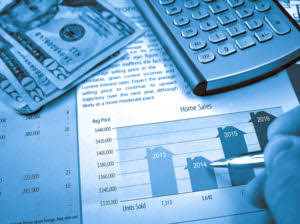As mentioned throughout, a higher turnover typically indicates greater sales volume, meaning the company is not having issues generating revenue. You are which is better virtual cfo or in-house cfo services not concerned about the COGS from the previous year, unlike with the average inventory calculation. Business leaders can monitor the turnover ratio to get a better understanding of how well the team manages and replaces its inventory. Get instant access to video lessons taught by experienced investment bankers. Learn financial statement modeling, DCF, M&A, LBO, Comps and Excel shortcuts. Rather than being a positive sign, high turnover could mean that the company is missing potential sales due to insufficient inventory.
How it Reflects Business Efficiency
Minimizing idle time during operations can significantly improve turnaround times and enhance overall operational productivity. Investments in new technologies can enhance operational efficiency, leading to better asset utilization tax withholding estimator and an improved asset turnover ratio. Conversely, failure to adopt new technologies may result in outdated processes and a declining ratio. Understanding the asset turnover ratio meaning and its implications helps stakeholders evaluate a company’s operational efficiency and make informed decisions regarding its financial health. If you aren’t comparing apples to apples, as we mentioned already, the inventory turnover ratio won’t give you accurate insight into how your business is performing. Make sure you’re accounting for discounts on items throughout the year, special campaigns or offers, and markup.
Inventory Turnover Calculator
A higher ratio indicates effective utilization of assets, whereas a lower ratio may reveal inefficiencies. However, the interpretation of this metric must be tailored to the specific industry since asset intensity can vary greatly. Investors should carefully compare the asset turnover ratios of companies within the same industry to obtain an accurate picture of operational efficiency. It’s also important to note that strategic investments in new technologies, such as AI and cloud computing, might temporarily depress the asset turnover ratio. Such investments represent a forward-looking strategy and may lead to long-term efficiency improvements, despite the short-term impact on the ratio.
What Is the Inventory Turnover Ratio?
If tracked on a trend basis, it can show investors whether management strategies are improving the efficiency of their production, manufacturing, or the american accounting association selling process or not. By implementing these strategies, you can optimize your inventory turnover ratio, improve operational efficiency, and drive sustainable business growth. Continuously evaluate and refine your inventory management practices to adapt to changing market dynamics and maximize business performance. Now, let’s explore practical strategies that you can implement to enhance your inventory turnover ratio and optimize your inventory management practices. By employing these strategies, you can increase efficiency, minimize holding costs, and improve overall business performance.
Real-time data from automation tools helps managers track time elapsed and make adjustments instantly. Automated notifications ensure teams respond quickly, minimizing disruptions and running supply chain operations smoothly. Implementing real-time monitoring systems enhances visibility, supports process optimization, and fosters smooth operations to achieve the desired outcome of faster TAT. Proactive alerts notify teams about potential delays, reducing waiting time and enabling faster responses. Alerts about late shipments or task completion updates can significantly reduce turnaround times by improving coordination. Discover how strong cash forecasting bridges your company’s daily treasury operations with its long-term financial strategy.
How to Calculate Turnaround Time
The more efficient the system is, the healthier the company is with its cash flow. Beyond internal decision-making, the inventory turnover ratio can also be used by external stakeholders to compare a company against industry peers. This might be used to inform investment and credit decisions, though it’s typically only effective when compared against businesses in similar lines of business, given seasonal variations and other factors. The inventory turnover ratio is a measure of how many times the company completely sells off its inventory in a given period of time.
Dividing the 365 days in the year by 8.8 shows that Walmart turned over its inventory about every 41 days on average. Regular training on new technologies and workflows ensures employees stay competent. Simulation programs for truck drivers and warehouse staff enhance familiarity with logistics processes. A skilled team can minimize downtime and reduce errors in case of unexpected issues.
Comparing your inventory turnover ratio with industry averages can provide valuable insights into your business’s competitive position and performance relative to peers. However, it’s essential to consider industry benchmarks and historical performance when assessing inventory turnover ratio. Comparing your ratio to industry averages or peers can provide valuable context and insights into your business’s performance. Use an MRP system or inventory management software to collect and analyze data regarding your inventory – about what sells and what does not.
The first step is to identify the beginning and ending inventory values shown on the balance sheet. This is typically the ending inventory balance from the previous and current periods. Income ratio is a metric used to measure the ability of a technology to recover the investment costs through savings achieved from customer utility bill cost reduction. The ratio divides the “savings” by the “investment”; an SIR score above 1 indicates that a household can recover the investment.
Optimized cash flow
- Find the right balance to build a profitable and sustainable dropshipping business.
- As powerful extra tools, other values that are really important to follow in order to verify a company’s profitability are EBIT and free cash flow.
- Consider a manufacturer of electronic components that sources raw materials from multiple suppliers and operates on a just-in-time production model.
- By implementing these strategies, you can optimize your inventory turnover ratio, improve operational efficiency, and drive sustainable business growth.
- This calculation tells you how many days it takes to sell the inventory on hand.
- Generally, a higher inventory turnover ratio indicates more efficient inventory management, but what qualifies as “good” can differ across industries.
Lack of experience can extend TAT due to errors and slower task completion. Skilled workers handle tasks faster, improving key metrics like lead time and minimizing downtime. Regular training programs sharpen employee expertise, increasing their ability to handle complex processes efficiently. When stakeholders share real-time updates, teams can prevent unnecessary delays and ensure smooth operations.
You can draw some conclusions from our examples that will help your business plan. Knowing how often you need to replenish inventory, you can plan orders or manufacturing lead times accordingly. Or, you can simply buy too much stock that is well beyond the demand for the product. A higher inventory turnover ratio indicates strong sales, while a low ratio may signal slow-moving products or poor sales. Inventory turnover is an especially important piece of data for maximizing efficiency in the sale of perishable and other time-sensitive goods.
reasons a company may be improving its inventory turnover
- By December almost the entire inventory is sold and the ending balance does not accurately reflect the company’s actual inventory during the year.
- In the digital age, various tools and software solutions are available to help businesses analyze their inventory turnover ratio more effectively.
- The formula used to calculate a company’s inventory turnover ratio is as follows.
- The more efficient and the faster this happens, the more cash a company will receive, making it more robust against any face-off with the market.
- Note that depending on your accounting method, COGS could be higher or lower.
As per its definition, inventory is a term that refers to raw materials for production, products under the manufacturing process, and finished goods ready for selling. What do you have in your store that already gets a lot of hype and has a high turnover rate? Inventory control techniques such as ABC analysis will help you categorize your SKUs according to their business value. A DSI value of approximately 44 days means that, on average, it takes the company about 44 days to sell its entire inventory. It’s the average value of inventory within a set time period, calculated by taking the arithmetic mean of the beginning inventory and ending inventory values.
A company that sells cell phones obviously will not have an inventory turnover ratio that is meaningful compared to a company that sells airplanes. A large value for inventory days means that the company spends a lot of time rotating its products, thus taking more time to convert them into cash to sustain operations. Conversely, if a company needs fewer days to get rid of its inventory, it will be in a better financial position since the cash inflows will be more robust. In order not to break this chain (also known as Cash conversion cycle), inventories have to turnover. The more efficient and the faster this happens, the more cash a company will receive, making it more robust against any face-off with the market.
Mortgage Calculators
The analysis of a company’s inventory turnover ratio to its industry benchmark, derived from its peer group of comparable companies can provide insights into its efficiency at inventory management. The inventory turnover ratio is calculated by dividing the cost of goods sold (COGS) by the average inventory balance for the matching period. Different industries require varying levels of asset investment, leading to differences in asset turnover ratios. For example, manufacturing companies often have substantial investments in machinery and equipment, resulting in lower asset turnover ratios. In contrast, service-oriented firms, which rely less on physical assets, may exhibit higher ratios.
However, tracking it over time or comparing it against a similar company’s ratio can be very useful. Analyzing post-turnaround reporting reveals valuable insights into operational gaps. Tracking key metrics, such as cycle time and completion times, highlights performance trends that can be used to make informed decisions, help refine processes, and avoid repeated delays. Logistics companies prioritize fast truck turnaround time to prevent congestion and streamline processes.










